The Early Years
An Autobiography
Childhood
“My brother and I learned to swim and play chess at the YMCA”
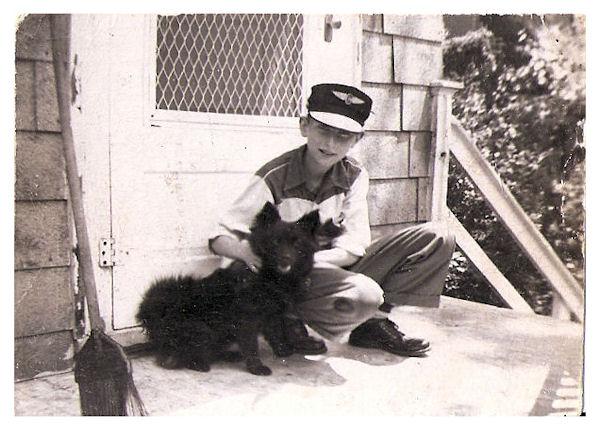 Life was simple during my childhood. We learned from our parents, our teachers, and the School of Hard Knocks. You either learned to fight or to take it. We walked or bicycled to school, and spent our free time outdoors—climbing trees, playing marbles, or constructing dirt roads for toy cars and trucks.
Life was simple during my childhood. We learned from our parents, our teachers, and the School of Hard Knocks. You either learned to fight or to take it. We walked or bicycled to school, and spent our free time outdoors—climbing trees, playing marbles, or constructing dirt roads for toy cars and trucks.
Saturdays were for the movies—double features, animated cartoons, and News Reels that brought the headlines to life. Sundays meant dressing smartly and attending church, a ritual that grounded us in faith and family.
I was born in Mt. Adams, Cincinnati, Ohio, in 1940. The streets were cobblestone, and milk was delivered by horse and wagon. The Mount Adams Incline connected downtown to our hilltop neighborhood—a working-class community of blue-collar families, proud and resilient.
By the time I turned two, I had a baby sister, Donna Sue, and an infant brother, Jimmy. We lived on Winneste Avenue in Winton Terrace, a public housing project that opened in 1940. One of my fondest memories of Winton Terrace is waking up on summer mornings to the hum of lawnmowers in the courtyard and the sweet scent of freshly cut grass drifting through the windows.
At six, I started first grade at St. Bernard Catholic School in nearby Winton Place. After my First Communion and Confirmation, I became an altar boy at St. Bernard Church. According to Google Maps, the walk from Winneste Avenue to St. Bernard takes about 25 minutes—or 7 minutes by bike—but to us, it felt longer. We often took a shortcut across a field and along the “cinder path” through the woods known as Winton Commons.
On school days, my mother prepared a hearty breakfast and packed our lunches—usually a bologna or peanut butter and jelly sandwich, a piece of fruit, and a thermos of milk. On Sundays, after church, my father took over the kitchen, giving my mother a break. His breakfasts were legendary: toast, bacon, oatmeal, and eggs.
What I value most about my dad is what he taught me—not just how to tie a tie or dress properly, but how to respect others. He showed us how to use tools: hammer, saw, drill. I learned the names and uses of open-end, box, Allen, spline, crescent, and pipe wrenches. He taught my brother and me how to row a boat and paddle a canoe—skills that felt like rites of passage.
Though it went against the rules of the Catholic Church, my parents signed us up for the YMCA. It was an enriching experience. We learned to swim, play chess, and navigate a world beyond our parish walls.
By age 13, we had moved to an apartment on Hamilton Avenue, between Northside and College Hill. I began seventh grade at St. Boniface School and became an altar boy at St. Boniface Church.
The church and rectory were breathtaking stone structures. I was awed by the vaulted ceilings, mosaic pillars, and the sanctuary beneath a golden dome. The altar stood beneath a marble shrine, and a grand organ filled the choir loft. I’ll never forget the sound when Mr. Dagger, the organist, activated the remote pipes hidden in the vestibules—it was like the building itself was singing.
Even now, St. Boniface remains one of the most unforgettable churches I’ve ever visited. Its stained glass windows, mosaic Stations of the Cross, and marble statues rival anything I’ve seen in Europe, the Baltics, or Oceania. It wasn’t just a place of worship—it was a cathedral of memory.
High School
“Although I wasn’t in school, I was learning—cash flow, markup, profit and loss, and customer relations”
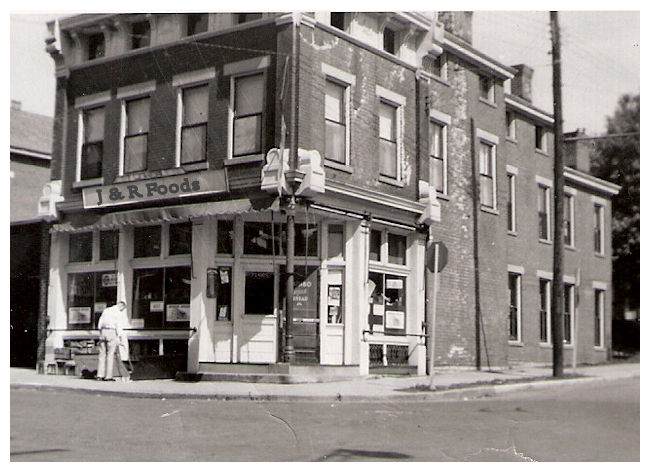 By the time I turned 14, my parents were running a grocery store at the corner of Chase and Chambers Streets in Northside, Cincinnati. J & R Foods offered a full line of groceries, fresh produce, and meats—my father was the butcher, proud and precise.
By the time I turned 14, my parents were running a grocery store at the corner of Chase and Chambers Streets in Northside, Cincinnati. J & R Foods offered a full line of groceries, fresh produce, and meats—my father was the butcher, proud and precise.
Though I was young, I loved helping customers and keeping the shelves stocked. My brother and I delivered groceries using wagons hitched to our bicycles. Sometimes, we’d earn a cookie or a piece of fruit as a tip—small gestures from grateful customers.
Sundays, when the store was closed, we handled the less glamorous tasks: mopping floors, cleaning the meat display and vegetable bins, and occasionaly defrosting the ice cream freezer. It was hard work, but it was ours.
Then came the real challenge. My father was diagnosed with throat cancer. The surgery and radiation treatments left him disfigured and deeply depressed. By the time I was 16, my parents had separated.
My mother was strong—sharp in business and steady in spirit—but without my father behind the butcher counter, the store became a heavy burden. I left school after my sophomore year to help. The first time the meat delivery man hung a side of beef in our cooler, he showed me how to break it down into quarters, right on the hook.
With each delivery, he taught me more. Between his guidance and the diagrams in my mother’s Betty Crocker Cookbook, I learned the cuts of meat and could slice a round steak, cut pork chops, and tie a rump roast with the skill of my father. My siblings helped after school, but the meat counter became my domain.
Although I wasn’t in school, I was learning—learning about cash flow, markup, profit and loss, and customer relations. I managed inventory and tracked deliveries to assure we were not cheated on the count. My mother and I played Scrabble® to sharpen our minds, and we’d compete to see who could take the largest grocery order over the phone and fill it from memory.
We kept an electric skillet behind the cooler, where my mother cooked meals, sometimes using produce that might otherwise spoil. We ate dinner between customers, tucked into the rhythm of the day.
There were grocery stores on nearly every corner, but ours was the only one offering fresh meats and vegetables. Then came Albers Super Market. Their ads touted a “vast assortment of frozen fresh foods, self-service fresh fruit and vegetables,” and pre-packaged meat wrapped in cellophane.
One moment sticks with me: a loyal customer—thinking Albers offered bologna for 59¢ per pound, complained about our price of 69¢ per pound. But Albers was selling an 11 ounce cellophane package for that price. When calculated, their price for bologna was 86¢ per pound. Our customer couldn't comprehend the math so the illusion won.
Still, I learned their tricks. We had 24 cans of cherry pie filling that wouldn’t sell. It was February, so I created a display: “Bake a Cherry Pie for Washington’s Birthday.” I changed the price from 29¢ each to three-for-a-dollar. We sold every can. That extra 4¢ per can would be worth 46¢ per can today.
Despite the store’s demands, I was determined to finish high school—and maybe even go to college. I resumed my junior year at West Night High School. There were no breaks, no lunch periods, no proms, no Friday-night ball games. I rode the city bus to and from school, did homework while watching Jack Paar on TV, making the most of every moment.
My West Night High School education was exceptional. My physics teacher was an MIT graduate who taught at night to fund his own studies. He often stayed after class to teach advanced concepts. One night, he explained the Big Bang Theory—decades before the concept gained mainstream acceptance.
My chemistry teacher worked at Procter & Gamble. One evening, he used the chalkboard to show how the organic formula for orange juice could be transformed into gasoline. He said the process was much too costly to be practical. However, today we change corn into gasoline and call it ethanol.
To earn extra money, I took on odd jobs for neighbors. I mowed lawns, washed cars, shoveled coal, and in the winter, "banked the fire" in the furnace each night for two elderly sisters so they would have some heat in the morning. Peg Walker taught me how to clean and hang wallpaper—a skill I came to master.
But odd jobs didn’t pay much, and I wanted radio equipment, to go on dates, and to own a car. My desire for a paying job led to arguments with my mother. Determined, I found work. In August 1958, I was hired as a “Page” in the Shelving Department at the downtown Cincinnati Public Library.
The store continued to demand our time, but profits were thin. My grandfather Brown, who had invested in the business, convinced my mother to remodel the store to resemble a supermarket. It backfired. We lost customers and revenue. My mother worked herself to the bone trying to keep it afloat. Eventually, we sold the store and moved on.
My mother took a job in the Catalog Department at the library where I worked. Selling the store meant leaving our apartment above it. We moved into a lovely two-floor apartment nearby—but had to give up our dog, Teddy. I cried for weeks when my mother told us she had put him down. He was only eight. I still hope there’s a Rainbow Bridge, so I can tell Teddy how sorry I am for his brief life.
I was the oldest, but my siblings and I were just a year apart. When they graduated, my sister became a secretary, and my brother a meat cutter in the super market. We pooled our earnings into a family fund and rented a small house on Chambers Street. The train tracks are gone now, but I remember the rumble of trains passing right beside our home.
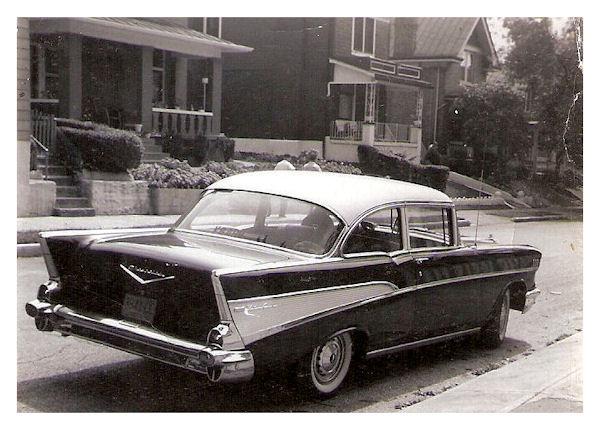 At 19, I was determined to drive myself to my high school graduation. So I walked into a dealership, purchased a used 1957 Chevrolet, and drove it home with pride. That weekend, I practiced parallel parking with a friend in a nearby cul-de-sac, preparing for my driver's license test.
At 19, I was determined to drive myself to my high school graduation. So I walked into a dealership, purchased a used 1957 Chevrolet, and drove it home with pride. That weekend, I practiced parallel parking with a friend in a nearby cul-de-sac, preparing for my driver's license test.
When I arrived for the exam, the ranger had me drive around the block and stop in front of an ice cream truck surrounded by children. He bought two cones, we returned to the station, and that was it—no parallel parking, no further testing. I left with a license and a story.
My mother hadn’t driven since before World War II, but she bought a black-and-white Nash Metropolitan convertible so she wouldn't have to depend on me getting her back and forth to work. My brother and I learned to drive a stick-shift in that car. Mom didn’t enjoy shifting gears, though, and soon traded it in for a new Chevy Two.
Meanwhile, my brother bought a 1950s Ford, and my sister began dating. I enrolled in Engineering at the University of Cincinnati, and for a while, life felt normal. My brother and I often double-dated, each in our own car. Those were the days of drive-in movies, miniature golf, Rock & Roll, and car hops on roller skates—simple pleasures that felt like freedom.
My job at the library paid modestly compared to the union wages my brother earned at the super market. When a position opened in the library’s printing department, I applied—but was rejected for not yet having a high school diploma. My mother, ever practical, convinced me the library wasn’t a long-term path. I left and took a job at the super market.
I wasn’t comfortable cutting meat in the cooler, so they assigned me to manage the deli. It felt like a return to our old store—fresh meats, home-baked pies, and a meat case I kept immaculate. I worked my 40 hours from Thursday to Sunday, and during my first Fourth of July weekend, I ordered a generous supply of potato salad. My boss thought it was too much.
The morning after the holiday, I had sold nearly everything. Only a fresh batch of potato salad remained to be displayed in the meat case. But despite the success, my boss fired me. I’ve always believed it wasn’t about the salad—it was about pride. I was right, and he couldn’t admit it. Later, my brother told me they had to hire two people to take my place in the deli.
With no job and the draft looming, I enlisted in the Air Force. It felt like a chance to gain the electronics training I craved, and the G.I. Bill offered hope for college. But when I returned home on leave after training in Biloxi, Mississippi, everything had changed.
My brother had totaled my car in an accident. My mother had sold my ham radio equipment. My sister had my Hi-Fi and 45 rpm records. My girlfriends and friends had moved on. My mother was dating, my sister engaged, my brother married. I spent long, idle days at the corner tavern, nursing the loss of a life that had quietly slipped away.
When I left Cincinnati for my assignment in Plattsburgh, New York, I carried that ache with me. It would be many years before I returned.
Ham Radio K8ARV
“At 15 I had my 'ham ticket' KN8ARV and built my own CW transmitter”
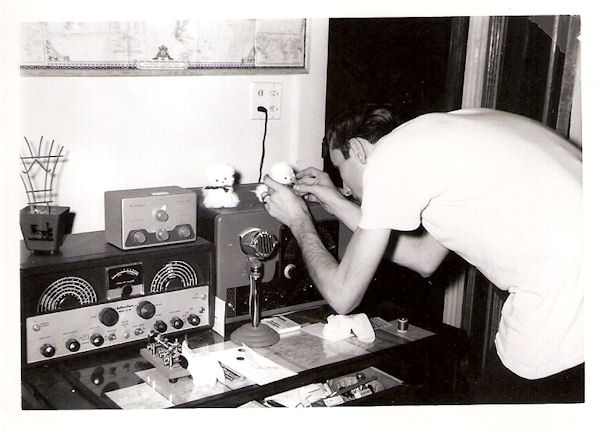 I was a sophomore at Sacred Heart Seminary when I joined the school’s amateur radio club. Membership required an “A” in mathematics. I had struggled with algebra the year before, but geometry clicked for me, and I earned the grade I needed to join the club.
I was a sophomore at Sacred Heart Seminary when I joined the school’s amateur radio club. Membership required an “A” in mathematics. I had struggled with algebra the year before, but geometry clicked for me, and I earned the grade I needed to join the club.
Electronics came naturally—capacity, resistance, voltage, current. I even began to understand algebra manipulatimg Ohm’s Law: I = E/R. It was the first time math felt like something I could use, something I could feel.
At 15, I passed the FCC Amateur Radio exam and earned my Novice class license: KN8ARV. The radio club had taught me the basics—electronics, FCC regulations, and Morse Code at 5 words per minute. As novices, we were limited to Morse Code, so we spoke in a language of Q-signals and abbreviations. After each QSO (contact), we exchanged QSL cards—postcards that confirmed the connection, rated signal quality, and offered TNX (thanks) and 73s (best wishes).
I became an active “ham,” spending every spare moment in the school’s ham shack. I connected with operators in Colorado, Florida, Oklahoma, and beyond. I still have 45 QSL cards from those early years—1956 to 1958—a tangible record of voices carried across the airwaves.
After leaving school to work in our family store, I wanted my own equipment. I took on odd jobs—washing cars, mowing lawns, shoveling coal. With a modest budget, I bought a used Hallicrafters SX-99 receiver, built a Heathkit 35-watt CW transmitter, and strung a long-wire antenna across the store’s roof.
I also acquired a Vibroplex “bug,” a semi-automatic key that let me send Morse Code faster by generating the dots automatically. Once I could send and receive at 15 wpm, I earned my General Class license: K8ARV. That license allowed me to operate in AM voice, but I needed a new transmitter.
After selling the store, we moved to Dane Avenue. There, I built a fully equipped ham shack. I upgraded to a Viking Valiant 200-watt CW/AM/SSB transmitter—thanks to Peg Walker, who generously overpaid me for odd jobs, allowing me to buy the pre-assembled version. I added a microphone for AM and built a Heathkit Q-Multiplier to sharpen reception.
For an antenna, I needed something discreet. In the rafters of an electronics salvage store, I found an old UHF bow-tie TV antenna. I modified it for the 10-meter ham band by wrapping a coil around a fishing float and mounted it on a pole outside my attic window. The antenna was bidirectional, and I rigged it with a flange and Allen wrench so I could rotate it manually. With that setup, I made contacts across the country—and even reached a ham in France transmitting from his Renault.
During my Air Force years, I tried to stay active by building a 110-volt power supply for the Gonset G76 mobile transceiver—the only piece of equipment my mother hadn’t sold. Like her, my wife opposed antennas, so I mounted a vertical ground plane atop a clothes pole in our yard in Peru, NY. One day, lightning struck it. It was properly grounded, so no damage occurred—but my wife insisted I take it down. I did. And with that, I stopped operating as K8ARV.
While in the Air Force, I could operate anywhere with my K8 call sign. But after relocating to Pennsylvania, I received a new area call sign: W2FDS. I was thrilled to have a “W” prefix, but after years of using “American Radio Voice” for ARV, I struggled to find phonetics for FDS. My friend Charlie Holbrick jokingly suggested “Feminine Deodorant Spray.”
Truthfully, I don’t remember operating much as W2FDS. I only had the G76 and a homemade power supply, and my wife remained firmly opposed to antennas. When it came time to renew the license, I let it lapse. I kept the G76 as a momento until I sold my Philadelphia property in August 2015—but in the end, it was discarded.
Dancing
“My Uncle's advice for the Lindy Hop was 'just keep the girl spinning'”
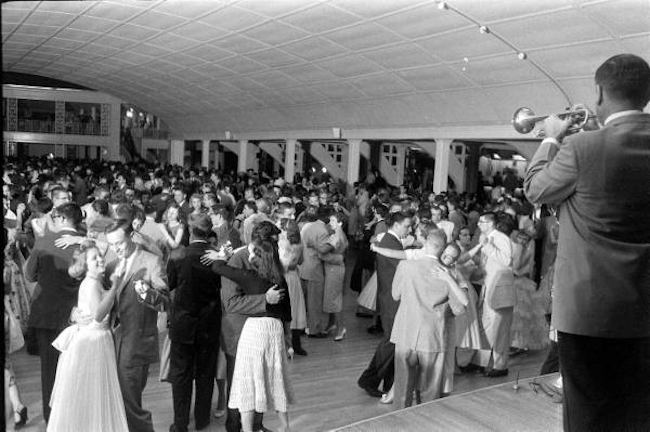 Around age ten, my parents enrolled my sister and me in tap dance lessons. I imagined myself dancing like José Greco, unaware that he was a Flamenco dancer, not Tap. The lessons were short-lived—either because we moved or because I was the only boy in the class.
Around age ten, my parents enrolled my sister and me in tap dance lessons. I imagined myself dancing like José Greco, unaware that he was a Flamenco dancer, not Tap. The lessons were short-lived—either because we moved or because I was the only boy in the class.
When I was around seventeen, something stirred in me—a renewed fascination with dance. Our music was a blend of slow, tender ballads from Andy Williams and Johnny Mathis, and the electric pulse of Elvis, Buddy Holly, and The Big Bopper.
House parties were the heartbeat of our social lives, often held in the cozy glow of finished basements, where laughter echoed off knotty pine walls and the scent of popcorn mingled with cologne.
But it was the Saturday night dances at Alt Park that truly captured my heart. Beneath the pavilion, a live band played, and for just a dollar, I held ten dance tickets in my palm—each one a chance.
The boy paid for the girl, and unlike today, there was no pressure—just the quiet thrill of connection. I favored the Jitterbug and Lindy Hop, dances that let me lead with flair and spin my partner like a star in orbit.
Slow dances were sacred—reserved for couples who had something tender between them. Getting lucky didn’t mean much more than a kiss on the upper level of the pavilion, beneath a canopy of stars, with the city lights of Covington, Kentucky twinkling across the Ohio River like a thousand whispered promises.
We danced the Pony Time and the Twist with joy, though others—Mashed Potatoes, Wahtusi, Nitty-Gritty—came and went like passing fads. Every dance had its own rhythm, its own courtship. Today’s dancers may bounce to the beat, but we moved with intention—like cranes fluffing their feathers, mourning doves gliding in duet, or mockingbirds showing off for love.
My first attempts at the Lindy Hop were clumsy, so I turned to my bachelor uncle for advice. He drove a convertible and always had a beautiful woman by his side. With a wink and a laugh, he told me, “Just keep the girl spinning.” I never forgot it.
I was shy, not the boy with a string of dates, but I had rhythm, grace, and a quiet confidence on the dance floor. I never had a regular partner that could do those dramatic overhead lifts, but with the right girl, I could dip her low and bring her back with elegance.
There was one girl who felt special. I took her to Moonlight Gardens at Coney Island in Cincinnati—a place where big bands like Paul Whiteman played beneath the stars. While we danced, she and another girl accidentally locked high heels. It was like watching two deer with tangled antlers, but I managed to untangle the moment and save the night.
At 21, stationed at Plattsburgh AFB, I found myself at Brody’s Night Club, where I was once known for my dance and wore the title of Limbo champion. The Limbo craze hadn’t lasted much longer than Chubby Checker’s Limbo Rock, but it lingered years later on the beaches of the Jersey Shore, where music met the waves.
After I married, the music faded. I didn’t dance again until I became separated. But the rhythm never left me. It lived in my bones, in the memory of moonlit pavilions, spinning girls, and the soft hush of a kiss beneath the stars.
©Copyright 2001 Charles Tyrrell - All rights reserved
No part of this publication may be reproduced, stored, or transmitted in any form without prior permission of the author. Copyright Notice
No part of this publication may be reproduced, stored, or transmitted in any form without prior permission of the author. Copyright Notice